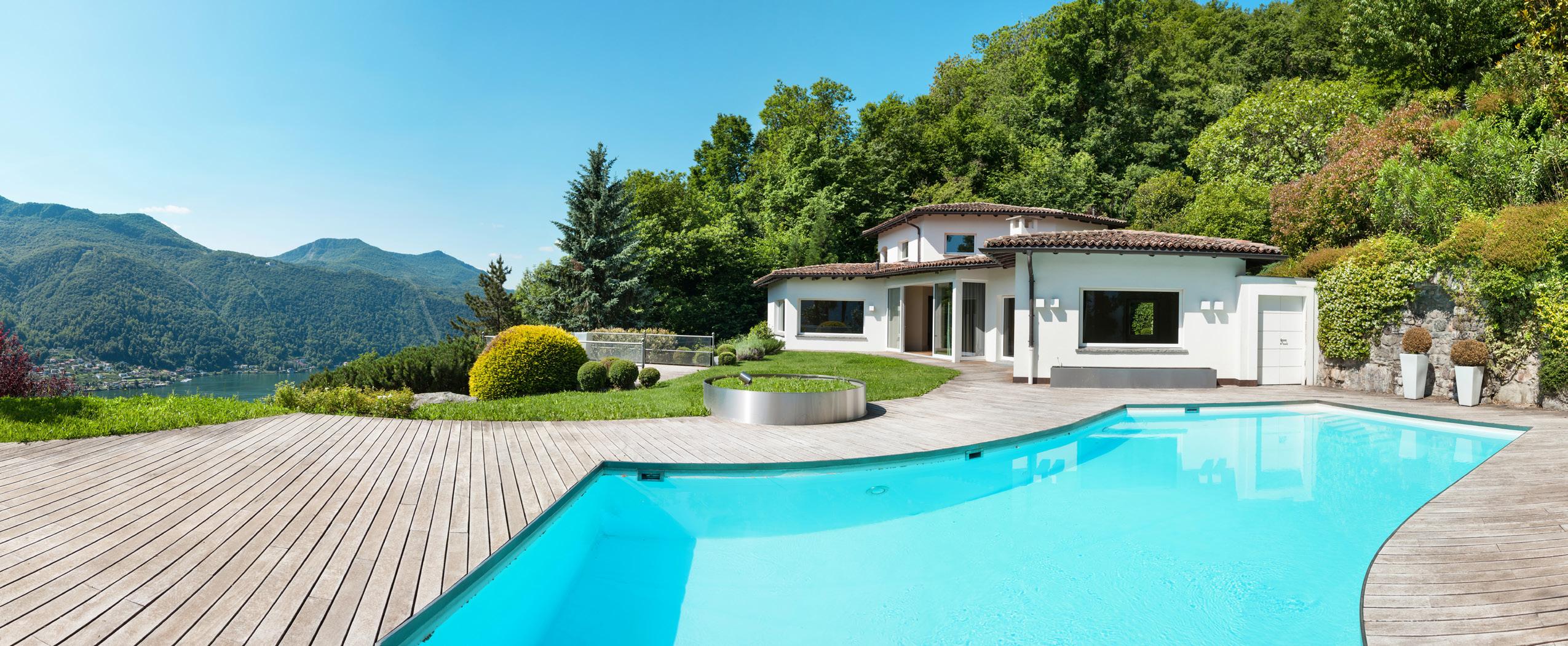ANNE-BRITT OSTLUND









































































After several years defined by sharp financial swings, shifting capital flows, and evolving buyer expectations, the North American luxury real estate market continues to settle into a more stable rhythm. According to the Institute’s data for September 2025, the results point to a market that is neither cooling dramatically nor accelerating uncontrollably but instead evolving into one characterized by moderation and discernment, although there are clear regional differences.
The numbers reveal both progress and adjustment: rising sales despite larger inventories, modest price appreciation, and a return to more traditional market pacing. Taken together, these shifts signal a luxury sector that continues to mature, with fundamentals, not volatility, driving performance.
Overall inventory in September rose by just under 14%, and new listings by 10.2% compared to September 2024. Sales increased by 15.2%, reflecting sustained buyer engagement even as options expand. The median sold price rose by 2.9%, while the median list price increased only 0.8%, underscoring a market where sellers are pricing more realistically and buyers are acting decisively on homes that meet high standards of value and lifestyle.
These dynamics point to a market that is now characterized by value-based negotiation. The luxury buyer of late 2025 is not chasing price spikes, they are prioritizing quality, location, design, and long-term stability. They are also factoring in broader economic influences such as interest rate adjustments, equity market performance, and global investment trends.
The last few months have seen a decline in the overall level of luxury inventory - falling by 8.0% since June, when it was at its highest. By comparison, in 2024, inventory increased by nearly 1% over the same four-month period. In correlation, the number of sold properties per month has also declined month
over month since June by 23.8% - putting this into perspective, the same period in 2024 saw a steeper 26.5% decline.
Overall, the number of luxury homes sold in 2025, as of the end of the third quarter, has exceeded 2024 levels by 4.9%. Thereby giving a clear indication that demand remains comparatively stronger this year, despite the more measured pace of recent months.
Overall inventory in September rose by 10.2% and new listings by 5.9% compared to September 2024. Sales increased by 14.6%, which is a substantial improvement given that the previous three months had each seen declines compared to their corresponding periods in 2024. The median sold price saw a 3.46% increase, while the median list price only increased by 0.1%, indicating that buyers remain willing to pay for well-positioned properties and are responding to competitive pricing.

This segment reached its greatest volume of available inventory in May 2025, but since then numbers have declined monthly and are now 7.3% lower as of the end of September. In contrast, in 2024, inventory rose nearly 1% during the same months. Similarly, the number of sold properties per month has declined month over month since May, with sales approximately 16.4% lower than in May, whereas in 2024 the decline was more pronounced at 23.4%.
Overall, as of the end of the third quarter, the total number of sold attached luxury properties in 2025 has declined by 4.3% compared to the previous year. This indicates that while this segment is stabilizing, it remains slightly more sensitive to pricing and inventory shifts than the luxury single-family market.
While these figures show current trends, it is important to view them within the broader context of the last several years. The market has been shaped not by internal over-correction but by external economic, financial, and global pressures from interest rate fluctuations and inflationary cycles to shifts in global wealth allocation and investment behavior.
Given the continued increase in overall inventory, it would be misleading to interpret the recent monthto-month declines as negative. Rather, these movements reflect a market that is leveling out. Despite external economic challenges, 2025’s data shows that luxury real estate has performed comparatively better than in 2024. The luxury sector remains in a cautious “wait-and-see” mode, but one that aligns with more traditional, sustainable expectations for growth and stability.
The Institute’s data underscores a critical narrative: month-to-month slowdowns in 2025 represent a recalibration, not a reversal. In many ways, the market is entering a phase of balance, where supply and demand are approaching parity and price movements are governed by fundamentals rather than sentiment. Buyers and sellers alike are adjusting expectations, price growth is moderating but not reversing, and overall confidence is stabilizing on stronger financial footing.
One of the most significant findings from the Institute’s data is how geographically distinct the luxury landscape has become. Broader national trends now conceal sharp local variations driven by regional economies, employment patterns, tax policy, and even international capital flows.

Across the United States, some of the strongest luxury markets in September were in California, Connecticut, Illinois, Maryland, Michigan, Minnesota, North Carolina, New Jersey, Ohio, and Virginia - all currently classified as seller’s markets. These areas continue to see tight inventory, strong absorption rates, and even competitive offers.
Meanwhile, much of the Sun Belt and Mountain West - including Arizona, Colorado, Florida, Georgia, Idaho and Texas – as well as Hawaii and Washington have transitioned toward balanced or buyer’s markets. This shift reflects both an easing of speculative demand and a normalization of supply following years of strong migration and luxury development.
In Canada, Alberta remains a strong seller’s market, supported by economic diversification and competitive pricing relative to global peers. Conversely, British Columbia and Ontario show signs of softening, particularly in urban condo markets where international demand has moderated due to global capital shifts and regulatory tightening.
The takeaway is clear: luxury real estate is once again a localized business, where understanding regional data and economic undercurrents is key to navigating opportunity.
Several powerful forces are influencing the trajectory of luxury housing across North America: most notably interest rates, capital markets, global wealth trends, and lifestyle reprioritization.
The recent rate cuts by the Federal Reserve – the first in over a year - and the Bank of Canada have begun to subtly shift market sentiment. Mortgage rates, though still high by historical standards, are now at their lowest levels of 2025. For ultra-high-net-worth buyers, the impact is largely psychological
Single-Family Homes
Attached Homes Single-Family List Price Attached List Price
All data is based off median values. Median prices represent properties priced above respective city benchmark prices.
$1,700,000
$1,500,000
$1,300,000
$1,100,000
$900,000
$700,000
$500,000
• Official Market Type: Seller's Market with a 21.20% Sales Ratio.1
• Homes are selling for an average of 97.99% of list price.
• The median luxury threshold2 price is $900,000, and the median luxury home sales price is $1,340,626.
• Markets with the Highest Median Sales Price: Pitkin County ($11,800,000), Telluride ($5,612,500), Paradise Valley ($4,138,717), and Eagle County ($4,125,000).
• Markets with the Highest Sales Ratio: Cleveland Suburbs (73.30%), Silicon Valley (65.70%), Central Connecticut (57.60%), and San Francisco (57.50%).
1
• Official Market Type: Balanced Market with a 16.90% Sales Ratio.1
• Attached homes are selling for an average of 98.21% of list price.
• The median luxury threshold2 price is $700,000, and the median attached luxury sale price is $904,100.
• Markets with the Highest Median Sales Price: Pitkin County ($3,100,000), San Francisco ($2,622,500), Park City ($2,600,000), and Whistler ($2,274,000).
• Markets with the Highest Sales Ratio: Morris County, NJ (81.80%), Fairfax County, VA (76.20%), DuPage County, IL (73.80%), and McLean & Vienna, VA (69.40%).
Median Sales Price Inventory
Solds
• Homes sold for a median of 94.92% of list price in September 2025.
• The most active price band is $500,000-$599,999, where the sales ratio is 200%.
• The median luxury sales price for attached homes is $1,175,000.
• The median days on market for September 2025 was 97 days, up from 95 in September 2024.